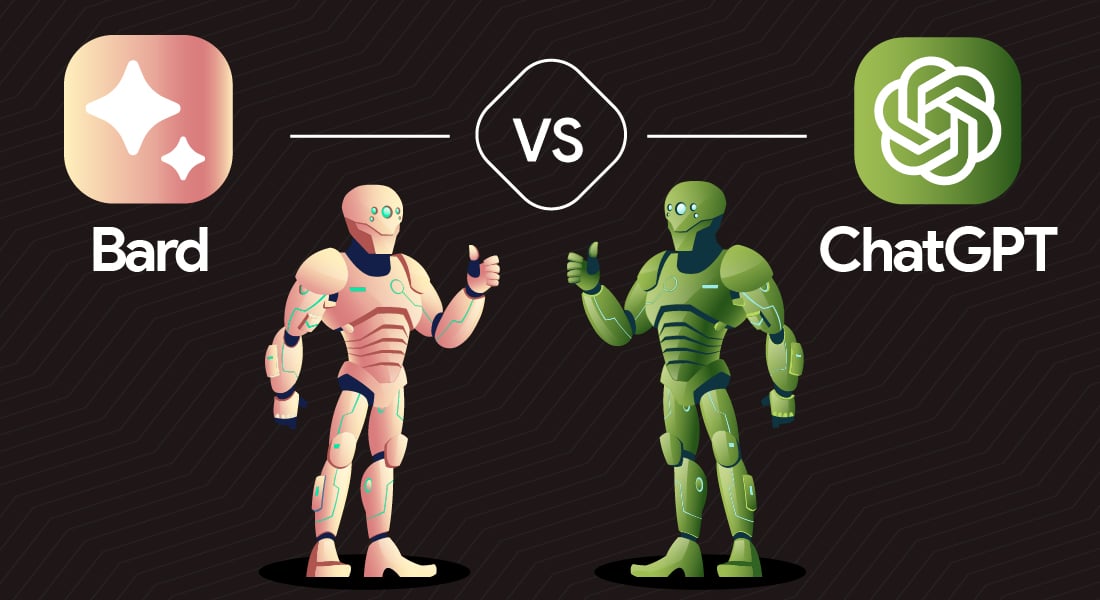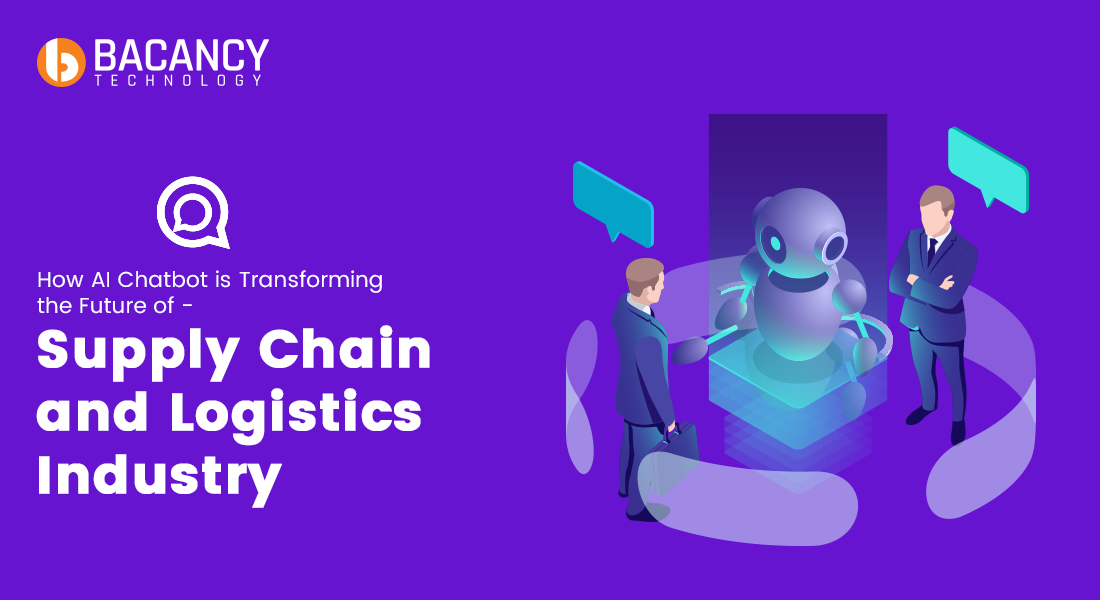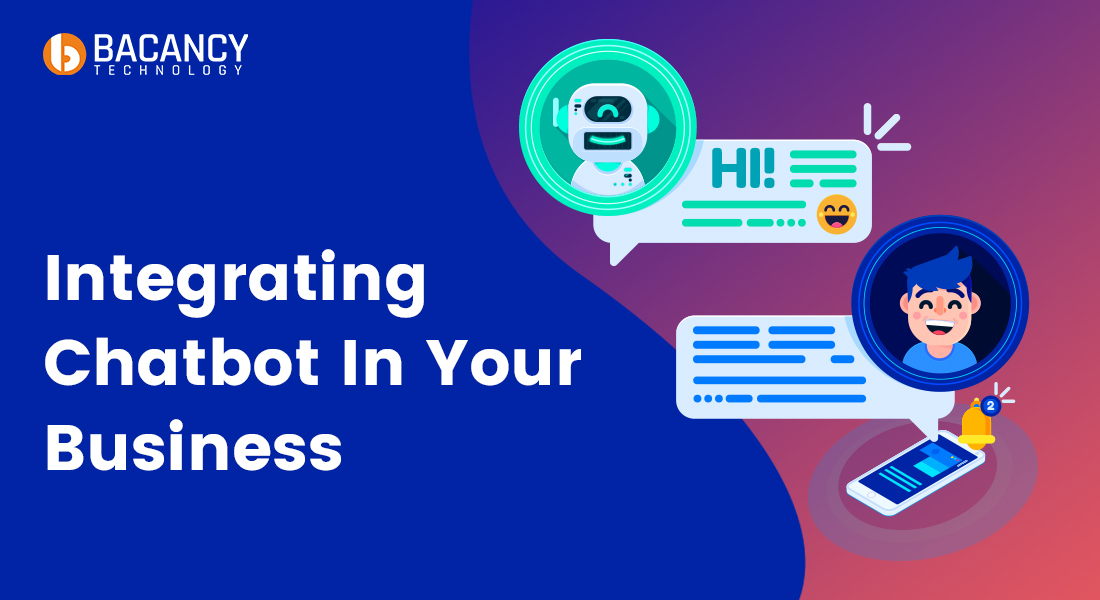| Feature | Google Bard | Open AI’s ChatGPT |
|---|---|---|
| Price | Free | The basic version is Free. Plus version costs $20 per month |
| Language Model | Pathways Language Model (PaLM 2) is present in the Bard symbol | GPT 3.5 (Generative Pre-Training Transformer 3) |
| Link Icon/External Link Indicator | Adds favicon in between the text to redirect to external link | No favicon or external link redirect |
| Underlying Technology | LaMDA (Language Model for Dialogue Application) | GPT 3.5 (Generative Pre-Training Transformer 3) |
| Strengths | Producing real-time answers | Producing creative texts (poems and scripts), concluding texts in short |
| Weaknesses | Less creative and overly technical | No real-time or latest information |
| Objective | Allows detailed research | Offer creative ways to generate texts |
| Data Authenticity | Real-time content generation | Trained on dataset upto January 2022 |
| User Experience | Verbose and informative | Creative |
| Output Control | Allows to control the tone and style of the generated text | Less control over the generated text |
| Linguistic Fluency | Formal & grammatically correct language | Slang, informality, and creative |
| Factual Accuracy | Produces real-time content due to internet access | Produces content based on older dataset |
| Data Sources | Bard is trained on Infiniset, a curated collection of internet content. Bard has internet access through Google. | ChatGPT is trained on a dataset from sources like Wikipedia, scientific journals, and news articles from September 2021. ChatGPT Plus has internet access through plugins. |
| Use Cases | Content generation, content revision, writing/debugging code, language translation. | GPT Plus can offer content summaries, information on current events, and image surfacing. |
Quick Summary
Bard and ChatGPT are independent large language models with unlimited possibilities to benefit businesses, irrespective of industry. In this blog, we will explore both language models and compare Bard Vs ChatGPT against strengths, weaknesses, and applications to help you decide which conversation AI model is suitable to transform your business operations.
Table of Contents
Bard & ChatGPT: A Tale of Two Titans
After COVID-19, Open AI’s ChatGPT garnered worldwide attention in November 2022, garnering 100 million users within two months after the launch. Now, do you think in the race of grabbing attention, the search engine giant Google would leave behind? Soon after ChatGPT’s launch, the Information Illuminati stepped in to give tough competition by bringing its ally, Bard.
So far, everyone has tried understanding conversational AI at least once. As an AI development company, our developers have bookmarked these conversational AI tools to generate, format, and document codes. A big sigh of relief. The conversational tool has halved our digital platform development time, which has benefited our clients in launching their products.
From leveraging conversational AI’s strength to facing limitations like ChatGPT’s data access ability and Bard’s factual inaccuracies (sometimes) due to overflooded database and jargon translations, there’s much more about both Large Language Models. Therefore, let’s get down to brass tacks and discuss the comparison, use cases, and business benefits (something you’d be more interested in ?) of Bard vs ChatGPT.
Unlike others, this post contains an updated wealth of information about both the large language models. We stay updated with the latest trends in the LLM sphere.
Bard VS ChatGPT: Decoding the DNA of Both LLMs

Both ChatGPT and Bard are Large Language Models built using different technologies. Prepare yourself to know about the intricacies of these conversational AI models. Both of them have blurred lines between human and machine-generated content. Explore our AI consulting services for an in-depth understanding of how you can accelerate your business sales and revenue using AI in different ways.
Bard VS ChatGPT: A Quick Glance
ChatGPT vs. Bard: A Detailed Comparison
The way you intend to use ChatGPT or Bard is your lookout. You can use it to overwhelm your users by providing 24/7 customer support, or you can use it to strengthen the company’s external communication. How you intend to use ChatGPT and Bard has a distinctive role in deciding which conversational AI is best for your company. However, we tested the performance of ChatGPT vs. Google Bard in seven crucial areas to help you make your decision.
ChatGPT: A Prodigy of OpenAI
It all started with Open AI’s innovation using LLMs and a vision of transforming the industry. ChatGPT is built using GPT-3.5 and has convinced users to continue using it due to its accurate and qualitative information generation ability, captivating conversations, and language translation.
OpenAI developed ChatGPT, which uses a Microsoft supercomputing platform to run its systems. ChatGPT is built using modern technology and algorithms trained on ample text and code databases that allow them to resemble human-like conversational texts. These texts are grammatically correct, relevant, and easy to understand. Hire Open AI Developer(s) to empower your digital presence and transform ideas into reality.
The free version of ChatGPT has limitations. It can’t summarize articles directly from a link, so users must copy and paste the text. Each input in ChatGPT is assigned tokens, which means there’s a limit on the number of words you can include. One token can represent either a character or a word. Each search is restricted to 4,096 tokens. Therefore, if your article exceeds 3,000 words, it’s advisable to use ChatGPT Plus for a response.
With ChatGPT Plus, you have the added benefit of accessing web pages through links. Utilizing plugins, like WebPilot, to enhance its summarization abilities. ChatGPT. Effectively breaks down articles into four sections while extracting the main highlights.
- Generate texts in over 25+ languages
- Trained over 600 Billion words
- 10 Million users across the globe
Statistics on ChatGPT:

Enhance Your Customer Service with Conversational AI
Do you need clarification about using Bard or ChatGPT to strengthen your customer support department? We have a solution.
Get In Touch With UsBard: A Masterpiece from Google AI
Google, an information provider, released Bard, a language model supported by PaLM 2 technology. The Data-Driven Diviner has shown a serious commitment to adapting technological advancement. Google created and launched Bard soon after ChatGPT made its debut.
Bard answers the most complex queries that even a class V student can understand. Built on deep learning and advanced algorithms, this language model offers comprehensive information about any query you ask. Bard always remains ahead of the ChatGPT when providing real-time information. Another favorable factor of Bard is the availability without paying a penny, making it everyone’s go-to information provider.
Research can be time-consuming, so having a tool to do it for you and summarize the key points is a significant advantage. Google has already proven its expertise in scanning search results to offer users the resources, so it’s no wonder that Bard also excels in this area. With Bard, all users need to do is provide a link to an article and request a summary, and Bard takes care of the rest.
- Trained over 1 Trillion words
- Real-time information through Google Search
- Already been used by millions of people
Statistics on Bard:
Putting 14 Factors to the Test: Bard vs ChatGPT
1. Tried Modifying Questions & Responses

Unlike ChatGPT, Bard simplifies questions and responses with just a few taps. If you want to alter tone or length, tapping the Modify Response icon below the generated text works for you. You can see the different options, like making the response shorter, longer, simpler, more casual, and more professional.
On the other hand, ChatGPT, a large language model by Open AI, lacks this feature of saving time and getting a job in a few taps. It always requires prompts to act.

2. Content with Source Link
Our thorough research on both Google Bard and ChatGPT has identified how Google Bard stands ahead of its counterpart regarding content authentication.
Google Bard comes up with a Google button below its generated response. Upon generating any response that may or may not contain statistics or facts, Google Bard allows you to quickly jump to the source right through its Google button below the generated text.

As you can see, upon clicking on the Google button, it highlights the sentences. What impressed us the most was when the generated text met the source, Bard highlighted the text in a greenish color. Contrary to that, when Bard and Google differ, the text is highlighted in an orangish color. (That’s a secret you will never find anywhere else ?)
Another great thing that amazed us is the presence of favicon as an external link indicator. This favicon will be present between the text where Google Bard thinks it is essential to give external sources as a testimony.
Strike off ChatGPT for text authentication for two reasons: generating obsolete content and missing source links or buttons, as Google Bard does. On top of that, there is no favicon introduction, neither GPT 3.5 nor GPT 4.
3. Editing Previous Responses
The battle of Bard vs ChatGPT favors Open AI’s innovation – ChatGPT- when editing previous responses. It lets you edit the previously entered prompt without any hassle. You will see a pen button below the prompt you entered. Just tap on it to edit the prompt and enjoy getting your desired information.
Contrary to this, Google Bard fails to edit the previous prompts, and you have to rewrite them again manually.
4. Sharing Responses Right Through The Platform
Both these conversational AI platforms (Bard and ChatGPT) enable sharing responses with others or anyone with access to the conversation. But there are some dissimilarities between the two.
There’s a drawback with ChatGPT 3.5 as it doesn’t support sharing responses. But the latest paid version, ChatGPT 4.0, allows you to generate and share images.
On the other hand, Bard generates and allows sharing conversations with images via Google Docs to whoever can access it. Consider Google Bard if you want a free option between the two.

5. Generating or Retrieving Images
Another major advantage of leveraging Bard over ChatGPT is generating images through the platform. Bard’s exceptional image-generating capabilities set it apart from its competitor, ChatGPT, in this race. Upon clicking on the image, it will redirect you to the relevant source of the image.
ChatGPT, on the other hand, needs to generate images. But it has a separate tool, i.e., DALL-E 3, which happens to be unlocked with ChatGPT’s paid version. As a result, you can generate blog images and design business logos with a few prompts.
6. Programming Expertise
As said earlier, our developers are proficient at building digital platforms with hands-on coding experience.
From what we had discussed with our software engineers, we concluded that ChatGPT produces cleaner code than Bard. Not only are the codes clean, but they are also easily understandable; this is the potential of ChatGPT.
Bard surpasses ChatGPT over one factor, i.e., code refactoring. From optimizing codes to setting up the benchmark for cleaner and readable codes, Bard wins this race of refactoring the code. Another advantage of leveraging Bard over ChatGPT is that the former was born by the search engine itself. At the same time, ChatGPT, being a Large Language Model, must catch up in several aspects.
ChatGPT understands the prompts and offers clear and easily understandable codes. Bard is great for code refactoring and debugging justifications.
7. Number of Content Variations
Google Bard’s limitless possibilities have convinced us to explore it more. What had our heart was one of the factors, which is to offer multiple results to a single query. Just type in something and expect more than one outcome.
Upon Bard’s announcement and observation of how it reacted to the prompts, Open AI started producing more than one result for every query. Previously, it used to produce only a single result for a single prompt. Open AI leaves no stone unturned to match what the user seeks.
8. Historical Data Saving Capacity
Both the large language models have conversation retention capacity. One developed by Google, known as Bard, can store 10,000 words of conversation history. Also, it ensures the utilization of the historical conversation’s context to generate responses. Besides, Google Bard ensures maintaining the coherence of the conversation irrespective of the number of exchanges.
Open AI’s ChatGPT can store up to 3000 words, less than Google’s Bard. Not only are the words stored less, but the conversational AI tool doesn’t even use historical data for response generation.
9. Accuracy
Content accuracy depends on how frequently the Large Language Model has been trained with the data and access to the internet. When talking about Bard vs ChatGPT, the former, founded by Google, has real-time access to the internet, meaning whatever prompt you enter on Bard, you can expect real-time information.
On the other hand, ChatGPT needs to improve when matching the relevancy and delivery of information. As per the last model training, ChatGPT provides information up to January 2022. Before January, it was trained to give information up to September 2021.
Therefore, you can trust Google’s Bard when you want real-time information and not ChatGPT due to obsolete information capacity.

Unlock New Business Opportunities with Language Model
Get new product ideas to expand your business horizon and build new revenue-generating streams through conversational Artificial Intelligence.
Book Your Availability10. Language Generation & Translation Capabilities
Both Large Language Models are built to support multiple languages, making them user-friendly worldwide, eventually ensuring inclusivity and accessibility.
As per the recent support page by Google, Bard supports 40+ languages and has a user base from more than 230 countries and territories. One of the biggest benefits of being a multilingual digital assistant is accommodating a larger user base; the conversational AI tool provides valuable insights into varied languages.
Open AI’s language model is ahead in the Google Bard vs. ChatGPT race by offering 50 languages’ support and catering to a wider audience than its alternative. It enables users from diverse backgrounds to communicate and engage with the systems effectively.
Since the language support by ChatGPT is more than Google’s Bard, it is evident that the language model by Open AI wins the race of ChatGPT vs Bard.
11. Creative Touch
Which one seems more creative, ChatGPT vs Google Bard? The answer doesn’t have any theory, but the only solution is practical evaluation.
I’ve inserted identical prompts to ChatGPT and Google Bard to observe the creative touch of both language models.
The first screenshot is from Google’s Bard.

The below one shows how creative ChatGPT is:

Though ChatGPT won the ChatGPT vs Bard comparison, we still had our eyes on Google’s Bard. The only reason is while ChatGPT generates a single response, Bard, upon giving the command, generates 3 different drafts to choose from. Below is the image through which you can look for the three drafts:

12. Image Generation on Prompts
No Bard alternatives can even come close to Google’s language model when generating images on prompts. ChatGPT is an exceptional one with a cache, meaning the user must buy the ChatGPT 4.0 version to receive images on entering prompts.
You can see how both Bard and ChatGPT react upon receiving identical prompts:
Google Bard’s response:

ChatGPT’s response:

13. Data Security
Both ChatGPT and Bard are entirely a language model working on prompts, meaning they produce content for the prompts you enter. Besides, it has a content retention capacity that uses historical data for answering queries.
ChatGPT was accused of generating phishing emails to lure readers and defraud them. Since we cannot delete ChatGPT’s history, it becomes challenging to share confidential information. Due to such instances, companies have been reported to ban using Open’s AI language model ChatGPT.
On the other hand, Bard has also been on the radar of being a potential threat to personal information shared on the platform, from being introduced as a helping hand to many human personnel to being a prominent malicious actor’s tool for defrauding users. There may be a rise in content copyright and infringement cases because Google Bard doesn’t seek permission to use information.
Therefore, it is evident that both Google Bard and ChatGPT have loopholes in their security. And none can be considered a reliable conversational AI tool since they are still in a learning curve.
14. Easy Third-Party Integrations
ChatGPT enables swift third-party integrations with ample plugins, like KAYAK, FiscalNote, OpenTable, Wolfram, Klarna, Milo, Slack, Speak, Instacart, Shopify, and Zapier. Having such integrations enhances not only the functionality but also the performance of the digital platform.
On the other hand, Bard also has similar acceptance for the integrations, including Eats, Spotify, Wolfram, Alpha, Khan Academy, Adobe Firefly, and Instacart. Therefore, the battle ChatGPT vs Bard is tied to third-party integrations.
ChatGPT Vs Bard: Pros and Cons
| Bard | ChatGPT |
|---|---|
| Advantages | Advantages |
|
|
| Bard | ChatGPT |
|---|---|
| Disadvantages | Disadvantages |
|
|
ChatGPT Vs Bard - Which is The Best Conversational AI to Invest in?
After thoroughly comparing Google Bard vs ChatGPT, choosing one language model over the other still becomes difficult. But considering the business perspective, we have listed down a few decisive factors to choose from, either Bard or ChatGPT.
Let’s look at those factors to conclude which language model is worth investing in for your business.
Product Development/Idea Generation
As a CTO, you must consider ChatGPT for generating product development ideas, catchy product descriptions, and social media posts for promoting your product(s).
To analyze campaigns for your product promotion, you can leverage Google Bard to curate, manage, evaluate, and boost your content marketing strategies. Regarding Bard vs ChatGPT, both chatbots seem quite worth your investment.
Research & Analysis
Bard is a well-trained large language model based on various datasets and customer feedback. Besides, the chatbot by Google can access real-time information, meaning you can know what customers think about the idea or product you want to launch in the market. Get an in-depth analysis of demographics, customer preferences, and product market fit through the conversational and research-based platform.
ChatGPT becomes creative when you try to enter any prompt for the research. No matter if you want to create a questionnaire, surveys, or social media awareness- or promotion-based posts. The dataset on which ChatGPT was trained is so creative that the response gives a hint of it.
Customer Representation
ChatGPT mimics human-like responses, benefiting businesses by allowing them to address multiple customer queries simultaneously. Besides, the chatbot even handles shipping schedules, product/item returns, service availability, and technical support.
Google Bard is known for managing time, meetings, appointments, and reminders. It even keeps track of all the processes that need to be followed. Moreover, Bard can even be used for table reservations and travel arrangements. Bard should be your top priority for delivering awesome customer service.
Content Reliability
ChatGPT and Google Bard are viable and investment-worthy options for receiving content for any query. However, there are some aspects where Google Bard performs better than Open AI’s ChatGPT. For instance, you can expect real-time information from Bard and consider ChatGPT when summarizing long texts. ChatGPT leverages GPT 3.5, while Google’s Bard prioritizes LaMDA, which makes the former chatbot specialized in text-based processing and the latter a conversational software robot.
Conclusion
We hope the comparative analysis – Google Bard vs ChatGPT will assist you in making an informed decision to invest in the best conversational AI or LLM. As an AI development company, we have hands-on experience in leveraging artificial intelligence for benefitting the business.
Hire ChatGPT developers to create AI-backed plugins that work exceptionally well to meet your organization’s requirements. From chatbot support to responding to your customer queries to generating content for marketing campaigns to generating content for product promotion, our AI development services take all the responsibilities of bringing imagination to reality.
Explore AI development services and connect with us for more information about how AI can revolutionize customer interactions and automate mundane tasks. Join hands with us to bring innovations to life.
Frequently Asked Questions (FAQs)
It is always debatable whether Google Bard or ChatGPT is better, but all we can say is both large language models are masters of their clan. ChatGPT perfectly summarizes texts, and Bard promptly answers customer queries.
No, Google Bard excels at speed and scope, leaving no room for its competitor to match the accuracy. Adding a single query can offer multiple drafts, which is quite challenging for ChatGPT.
As per our software engineers, both large language models are great for coding and building digital products. Bard masters understand the coding intent and generate code precisely consistent with the product. ChatGPT generates syntactically correct and efficient code.
You can count on Google Bard to generate well-structured, clean codes for programming languages like Python, Java, C++, and Javascript. The generated code is easier to understand, and Google Bard strictly follows the best practices for curating code.
Bard creates conversational text formats and streamlines ML pipelines, while Gemini focuses on image synthesis and other capabilities, like integrating audio, video, text, and image data. Bard leverages transformer-based architecture, while Gemini is built onto a more complex architecture with other techniques, such as diffusion models. Bard is upskilled on text data. Contrary to this, Gemini engages with text, images, videos, and audio.
| Aspects | Bard | Gemini | ChatGPT |
|---|---|---|---|
| Strengths | Automation, text generation, and answering questions | Multimodal tasks & image synthesis | Creative text generation |
| Weaknesses | Restrictive multimodal capacities | Potentially bias | Restrictive factual correctness |
| Architecture | Transformer-based | Transformer+diffusion based | Transformer-based |
| Training Data | Texts & Images only | Image, text, video, and audio | Text only |
| Objective | Text generation | Multimodal integration | Conversational text-based generation |
Your Success Is Guaranteed !
We accelerate the release of digital product and guaranteed their success
We Use Slack, Jira & GitHub for Accurate Deployment and Effective Communication.




